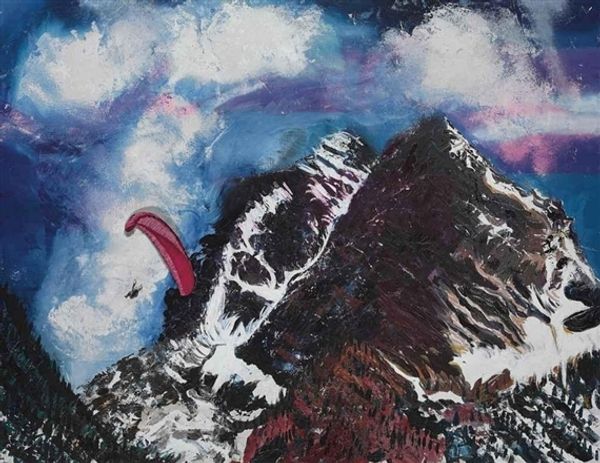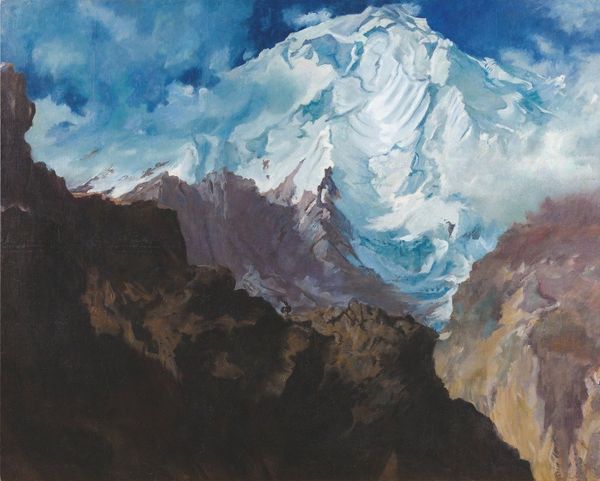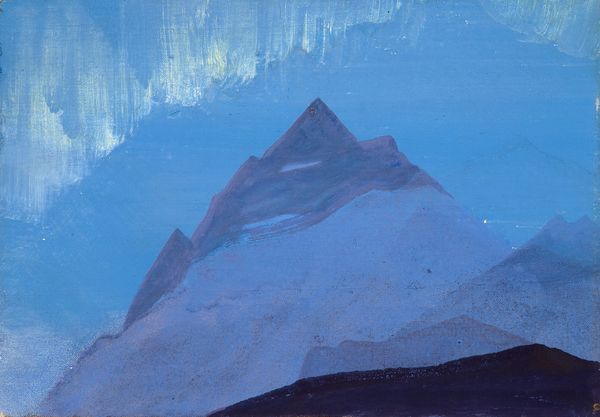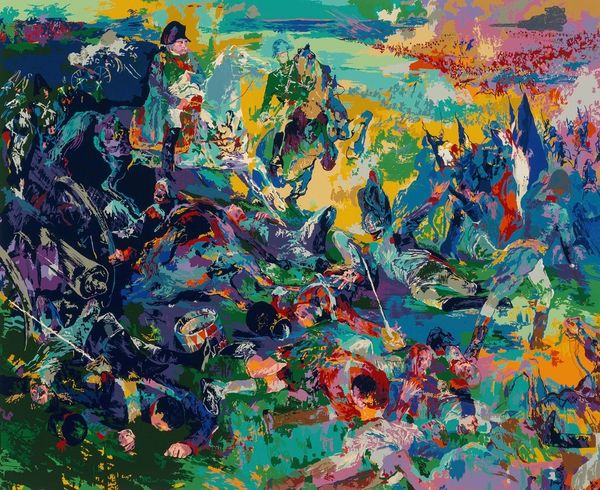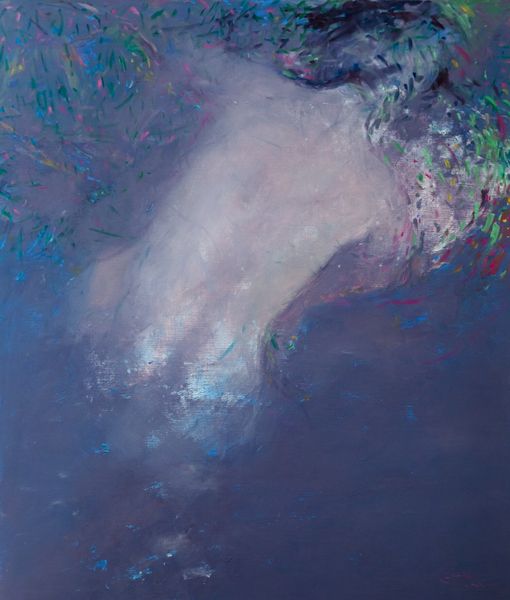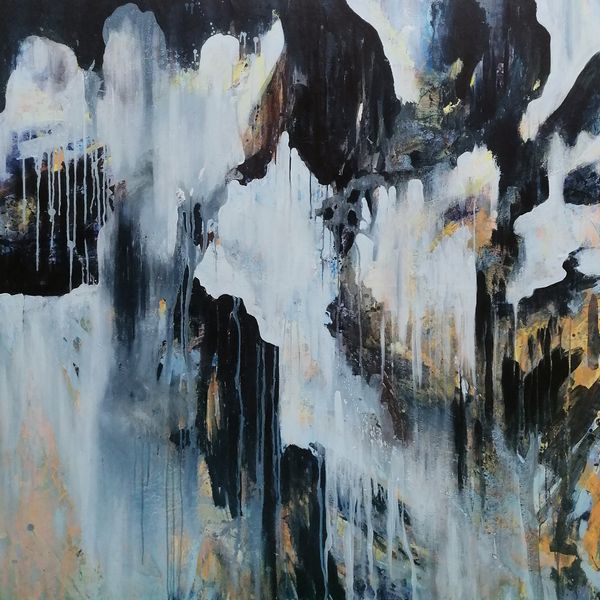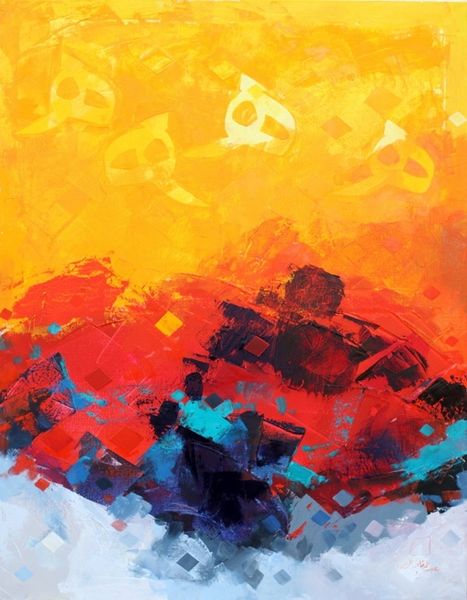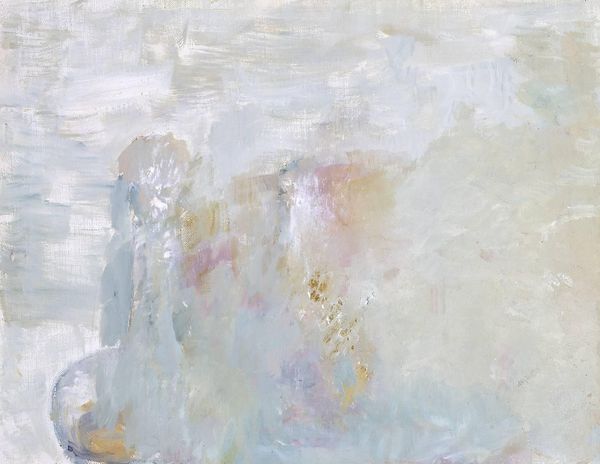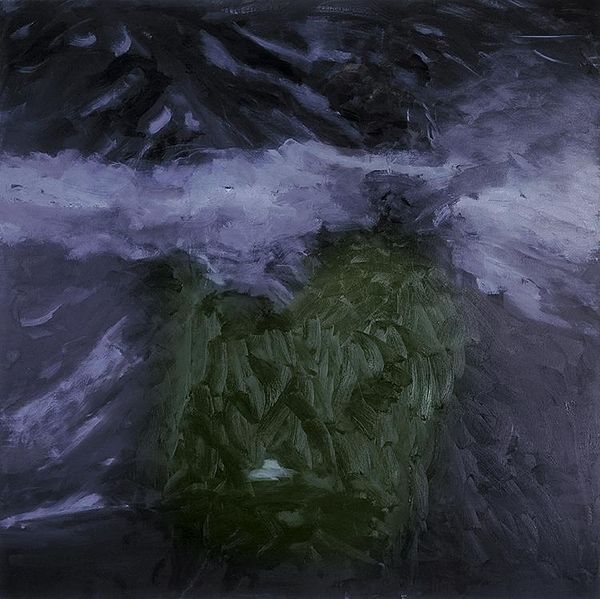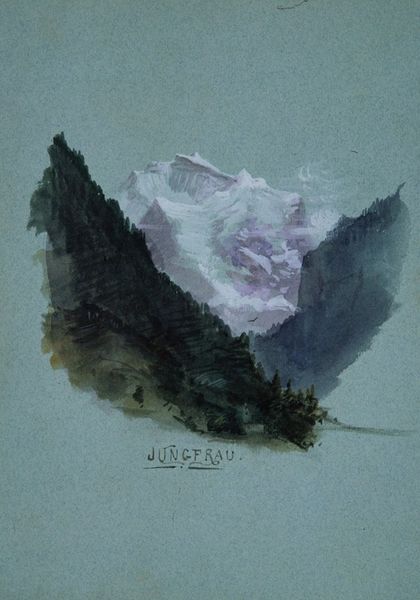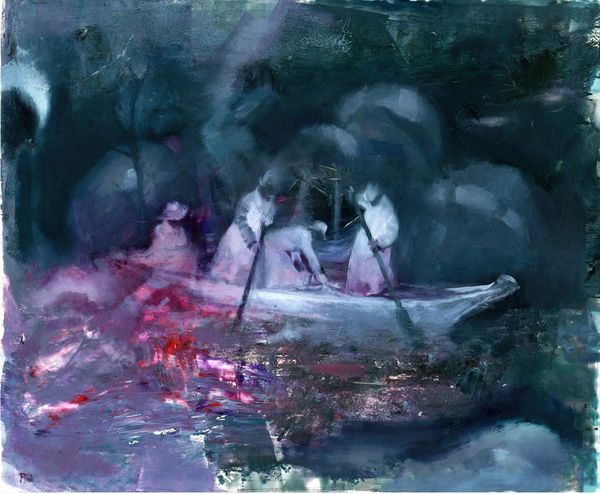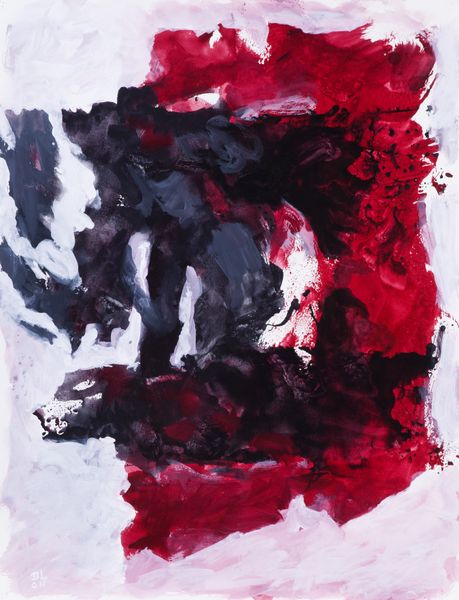
Copyright: Modern Artists: Artvee
Curator: Looking at this oil and acrylic on canvas piece, “Something is Always Far Away,” completed in 2020 by Joshua Flint, I am immediately struck by its sublime solitude. Editor: Sublime, certainly. But I also read a kind of melancholy in its stark depiction. It reminds me of how landscape painting in the Romantic era functioned as a response to urbanization. A symbolic space for thinking about ideas around purity and the "natural." Curator: The mountain definitely reads as a classical symbol. Consider how mountains have functioned across cultures from Mount Olympus in Greece to Mount Sinai in Judeo-Christian tradition. A motif laden with psychological significance, often representing an ascension of the self toward enlightenment. Editor: And the artist, I think, complicates that classical reading. Rather than offering some redemptive experience, there's this looming sense of isolation. What happens when that peak is reached, and all that's left is cold and distance? How are we impacted by our relationship to that space? I wonder. Curator: Indeed, the swirling strokes and muted palette, the way the colors bleed into each other. There’s a tension between representation and abstraction here that I find incredibly compelling. The artist plays with these dreamlike colors contrasting with the reality of the snowcapped mountain. It really brings me to a kind of meditative state, wondering how all these elements contribute to the symbolism. Editor: Yes! It is like this feeling that this “landscape” reflects a sense of internal or subjective experience, as much as anything that might exist externally. And, as we grapple with these ideas around climate change and access to land, landscape painting itself is so complex, isn’t it? I’m drawn to what this particular image can tell us about power, access, and belonging. Curator: Well, for me, this discussion illuminated just how fluid and evolving our understanding of such archetypal symbols can be. This contemporary lens really opens the mind. Editor: Absolutely. By acknowledging these landscapes' social and historical contexts, we confront their intricate relationship with both culture and selfhood. It encourages the observer to look further beyond the frame, too.
Comments
No comments
Be the first to comment and join the conversation on the ultimate creative platform.
